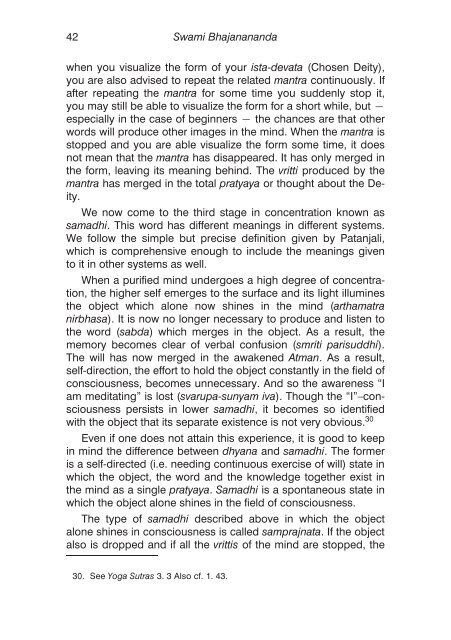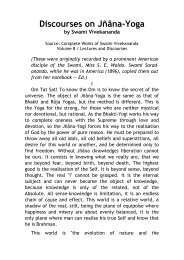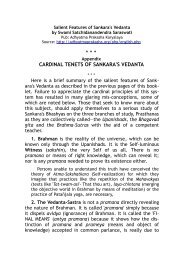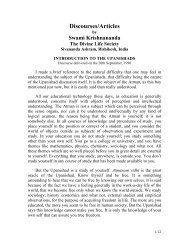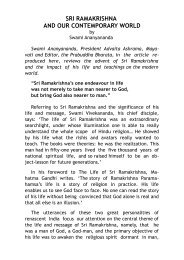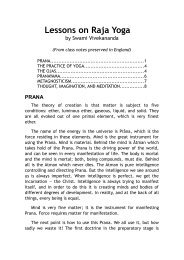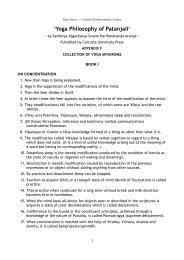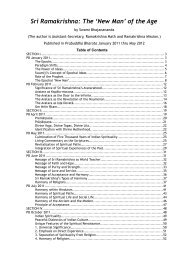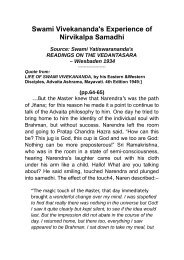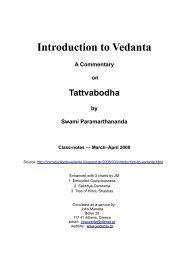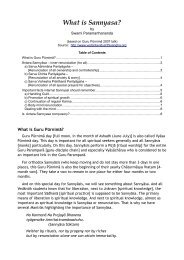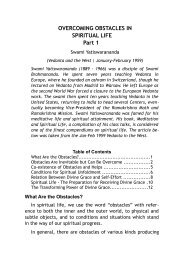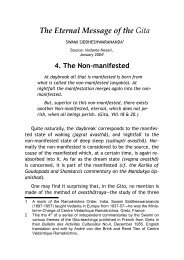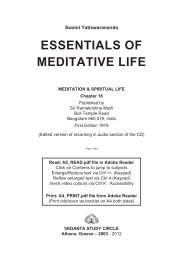Concentration & Meditation - Vedanta
Concentration & Meditation - Vedanta
Concentration & Meditation - Vedanta
Create successful ePaper yourself
Turn your PDF publications into a flip-book with our unique Google optimized e-Paper software.
42 Swami Bhajananandawhen you visualize the form of your ista-devata (Chosen Deity),you are also advised to repeat the related mantra continuously. Ifafter repeating the mantra for some time you suddenly stop it,you may still be able to visualize the form for a short while, but —especially in the case of beginners — the chances are that otherwords will produce other images in the mind. When the mantra isstopped and you are able visualize the form some time, it doesnot mean that the mantra has disappeared. It has only merged inthe form, leaving its meaning behind. The vritti produced by themantra has merged in the total pratyaya or thought about the Deity.We now come to the third stage in concentration known assamadhi. This word has different meanings in different systems.We follow the simple but precise definition given by Patanjali,which is comprehensive enough to include the meanings givento it in other systems as well.When a purified mind undergoes a high degree of concentration,the higher self emerges to the surface and its light illuminesthe object which alone now shines in the mind (arthamatranirbhasa). It is now no longer necessary to produce and listen tothe word (sabda) which merges in the object. As a result, thememory becomes clear of verbal confusion (smriti parisuddhi).The will has now merged in the awakened Atman. As a result,self-direction, the effort to hold the object constantly in the field ofconsciousness, becomes unnecessary. And so the awareness “Iam meditating” is lost (svarupa-sunyam iva). Though the “I”–consciousnesspersists in lower samadhi, it becomes so identifiedwith the object that its separate existence is not very obvious. 30Even if one does not attain this experience, it is good to keepin mind the difference between dhyana and samadhi. The formeris a self-directed (i.e. needing continuous exercise of will) state inwhich the object, the word and the knowledge together exist inthe mind as a single pratyaya. Samadhi is a spontaneous state inwhich the object alone shines in the field of consciousness.The type of samadhi described above in which the objectalone shines in consciousness is called samprajnata. If the objectalso is dropped and if all the vrittis of the mind are stopped, the30. See Yoga Sutras 3. 3 Also cf. 1. 43.


